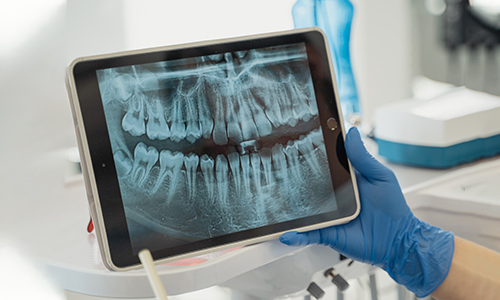Are Dental X-Rays Safe? First Point Dental Clinics
Every patient who visits a dental clinic will find a set-up of dental X-rays or radiographs, as they are key diagnostic tools that are required in any dental care or treatment plan.
Dental X-rays can help check the condition of teeth, roots, jawbone, and facial bone composition as well as spot any dental concerns that go unnoticed in an oral examination. They provide detailed images of the inside of the mouth as they can go deep through the tooth enamel, beneath the gums, to the tooth roots, and into the jawbone. This allows the dentists to carefully examine the oral cavity and determine appropriate measures that are required.
Are dental X-rays Safe? If you are considering dental X-ray then you must know it makes use of radiation to achieve results, which is why you may think it is unsafe. However, the reality is they are safe and make use of low levels of radiation, and can be used regularly by people to keep track of their oral health. To clarify, read the provided information to understand the procedure, how much radiation is used in dental X-rays, who is not suitable to have dental X-rays, and how often is it safe to have teeth x-rays?
What Happens During Dental X-rays?
A dental X-ray is a virtually painless procedure that usually takes a few moments for the patients to scan the inside of their mouth i.e. either a specific area or the entire mouth. Typically, they are performed in a dental office by a dental professional. The procedure involves the following steps:
- The patient sits upright in a chair or stands straight.
- A lead apron is placed over the patient’s chest with a thyroid collar wrapped around the neck. This helps shield the body from the effects of radiation.
- An X-ray film or sensor is placed inside the mouth by the dental technician to get all the views and angles of the mouth.
The Level Of Radiation Used In Dental X-rays:
Thanks to rapid advancements made in dentistry, the single digital dental X-rays used today emit very low radiations i.e. 0.1 mrem. It is much lower than the radiation naturally emitted from soil (35 mrem/year), drinking water (5 mrem/year), burning of natural gas for heating and cooking purposes (9 mrem/year), smoking cigarettes (1300 mrem/year), and transcontinental flight (2-4 mrem).
Although the patients are being exposed to extremely small doses of radiation, the benefits of having them outweigh the possible risks.
The reason there is low exposure to radiation to maintain patient safety is:
- The high speed of dental X-ray films limits the amount of radiation required to get good pictures
- Restriction of the radiation beam to a small and concentrated region (less than 3 inches in diameter) as it comes out through a small cone by the large dental X-ray machines
- Patients cover themselves with lead-lined full-body aprons
- Regular safety inspections are conducted on X-ray machines as per the stringent federal laws by the local and state health departments
- Reduce the number of images taken by dental-X ray machines for each patient
Who Requires Teeth X-rays?
Dental X-rays are performed on children and adults to check for:
- Tooth decay (even below the existing dental fillings)
- Loss of jawbone
- Detect tumors or unusual growths or oral cancer
- Damage to the root canal or jawbone because of infection
- Changes in teeth alignment
- Impaction of teeth
- Dental abscesses (an infection at the tooth roots or between the gums and teeth)
- Condition of the teeth before going for dental procedures like dental braces, dental implants, root canal therapy, and dentures.
Are dental X-rays safe for childbearing women? Dental X-rays are not recommended for childbearing women. This is because the growing child is more susceptible to impaired health after being exposed to even minimal radiation of dental X-rays. The speed at which the changes are made in the cellular and DNA level of the fetus results in dangerous effects of dental X-rays. Even very young children who have rapidly dividing cells inside their body may be vulnerable to getting affected by radiation of dental X-rays. However, the radiation from dental X-rays are cumulative over the lifetime.
How Often Is It Safe To Have Dental X-rays?
Dental X-rays must only be taken when it is necessary for an accurate dental diagnosis or assignment. However, the number and the frequency of having dental X-rays all depend on the patient’s current oral health status and medical as well as dental history. Patients having no medical or dental records of any issues must also go for X-rays in their regular dental check-ups, which are scheduled twice a year.
Teeth X-rays are often or more frequently performed with children and teenagers having a history of tooth cavities, individuals suffering from periodontal gum disease, smokers, people with dry mouth, people with frequent intake of sugary drinks and chewing of tobacco, and adults with a history of dental restoration procedures.
If you have any concerns and questions related to dental X-rays, ease your doubts by scheduling an appointment with the best dental experts in Chicago at First Point Dental.

